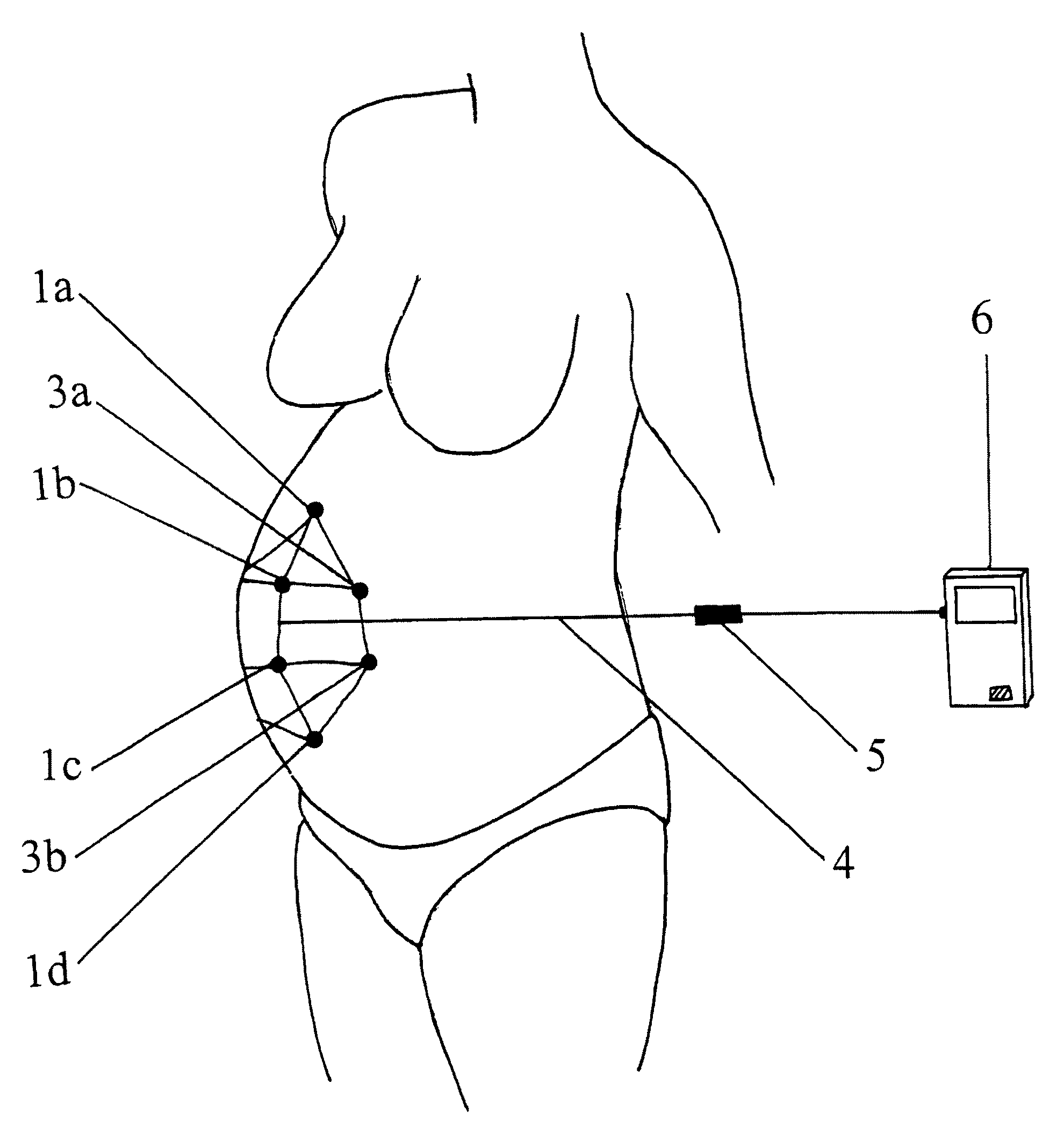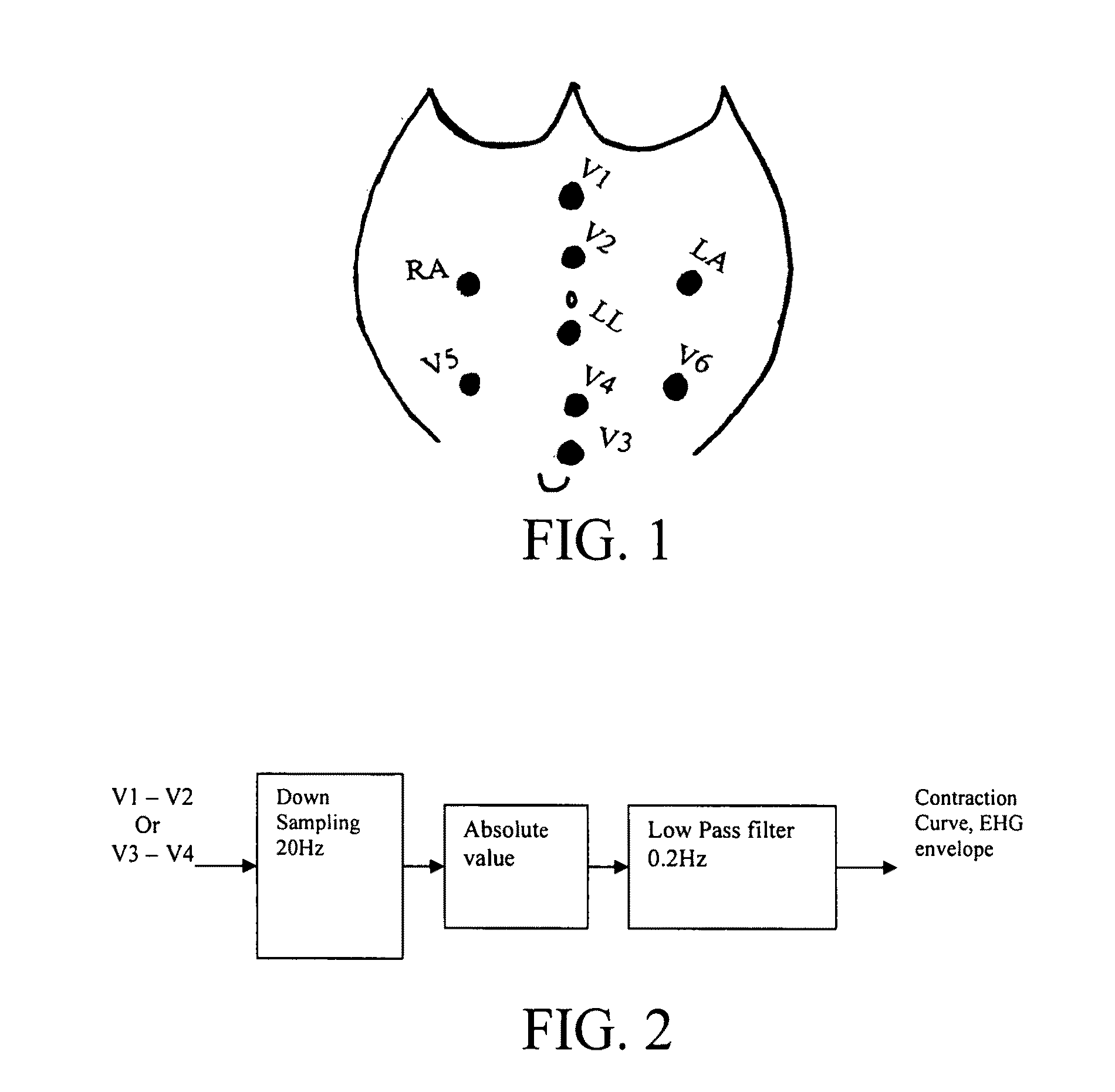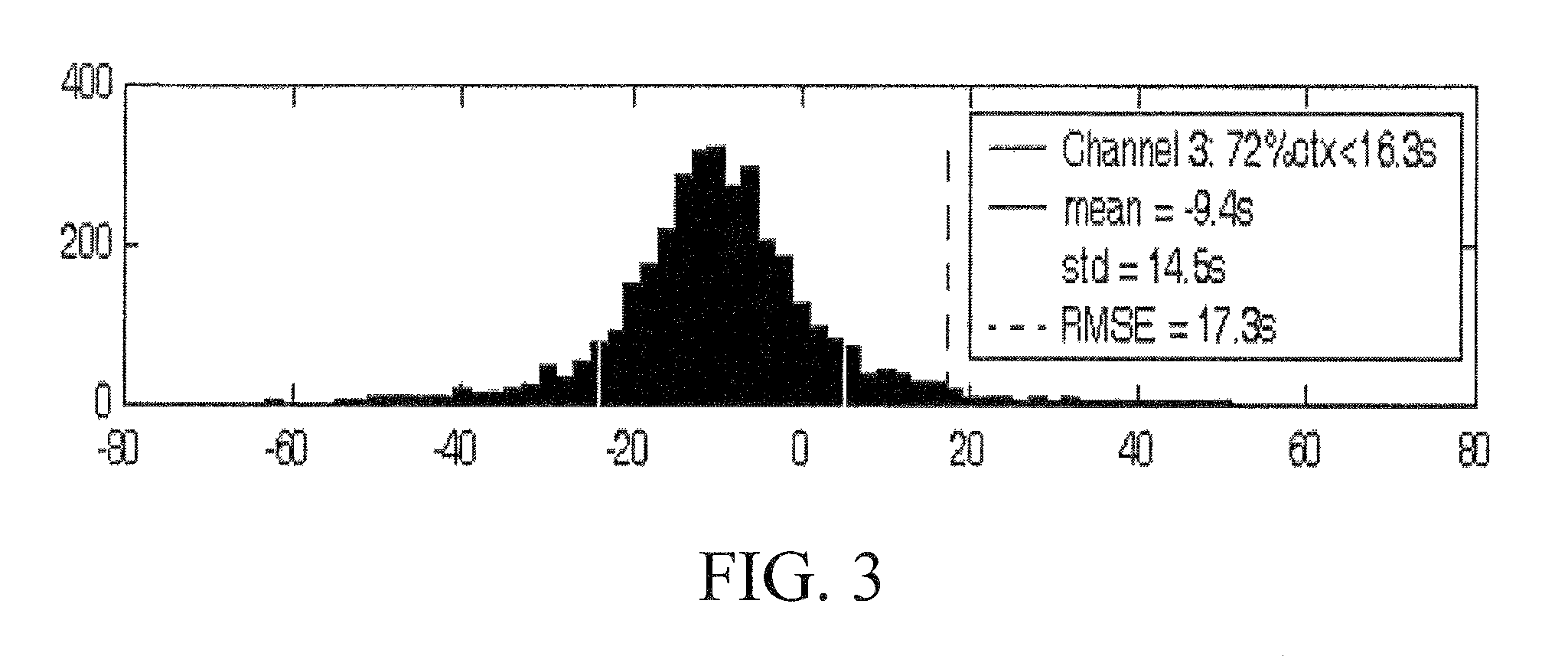Obstetric analgesia system
a technology of analgesics and obstetrics, applied in the field of analgesic systems and methods, can solve the problems of little scientific basis to suggest an advantage of one drug over another in the obstetric setting, opioids have the potential for adverse neonatal effects, and women's pain is severe, and achieves rapid and predictable onset, short duration of bio-activity, and high titratability.
- Summary
- Abstract
- Description
- Claims
- Application Information
AI Technical Summary
Benefits of technology
Problems solved by technology
Method used
Image
Examples
example 1
Monitoring of EHG Data
[0204]EHG data was collected from over 500 patients using an EHG monitoring system such as those disclosed in U.S. patent application Ser. No. 10 / 857,107.
[0205]Following skin preparation by gentle rubbing with an abrasive gel, an array of eight 3-cm2 Ag / AgCl2 electrodes (Ambu; Glen Burnie, MD.) was placed over the maternal abdomen (FIG. 1) and signals amplified with high gain (60 dB+) low noise amplifiers. All eight signals were measured with respect to a reference electrode.
[0206]One amplifier was provided that used a driven right leg (DRL) circuitry to reduce common mode noise between the patient and the amplifier common. The amplifier 3 dB bandwidth was 0.1 Hz and 100 Hz, with a 60 Hz notch.
[0207]Data extracted from the electrodes were transferred to a personal computer (PC) via a 16-bit resolution A / D card and stored at a 200 Hz sampling frequency. In addition to electrical signals, data from a standard maternal-fetal monitor (Corometrics, GE Medical System...
example 2
Comparison of Contraction Data
[0208]A study was performed to assess the accuracy of contraction data calculated from extracted EHG data when compared against data extracted via an IUPC. EHG data was extracted using the maternal-fetal monitoring system described in Example 1. In order to visualize and quantify the electrohysterogram (EHG), the signals from the electrodes were preprocessed (FIG. 2) to establish the envelope of the EHG signal (“envelope,” in signal processing terms is similar to the average energy) that can be directly compared with contraction data extracted using an IUPC (intrauterine pressure catheter). In an alternative embodiment, the EHG signals could be preprocessed for direct comparison with a tocodynamometer.
[0209]In this study, EHG data from the study described in Example 1 was compared against IUPC data collected from a study of 64 different patients and a gestational age greater than or equal to 35. Using the maternal-fetal monitoring system of Example 1, u...
example 3
Estimating Contraction Onset
[0211]For predicting contraction onset, the unprocessed signal (prior to envelope detection described above) is preferably utilized as a basis since it preserves much more of the timing information of the original event. FIGS. 4A and 4B present two illustrative examples of the EHG extracted from a clinical study of the monitor conducted at the University of Florida's Shands Hospital (IRB #528-2003). In this study, the use of the monitoring system described herein for extracting EHG and ECG was investigated in term, laboring women who were simultaneously monitored with traditional electronic monitors, in this case with IUPC placed for obstetric indications. It can be observed from these examples that, indeed, the EHG signal precedes the increase in pressure measured by the IUPC.
[0212]In one embodiment, the obstetric analgesic system of the invention comprises a modeling and signal processing means to predict the occurrence of the contraction with sufficien...
PUM
 Login to View More
Login to View More Abstract
Description
Claims
Application Information
 Login to View More
Login to View More - R&D
- Intellectual Property
- Life Sciences
- Materials
- Tech Scout
- Unparalleled Data Quality
- Higher Quality Content
- 60% Fewer Hallucinations
Browse by: Latest US Patents, China's latest patents, Technical Efficacy Thesaurus, Application Domain, Technology Topic, Popular Technical Reports.
© 2025 PatSnap. All rights reserved.Legal|Privacy policy|Modern Slavery Act Transparency Statement|Sitemap|About US| Contact US: help@patsnap.com



